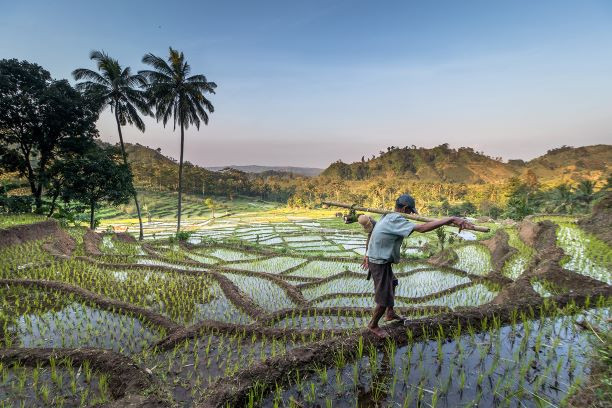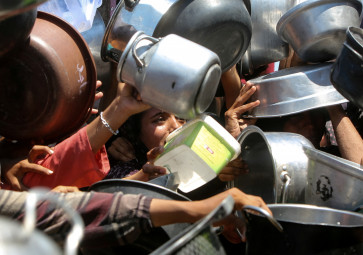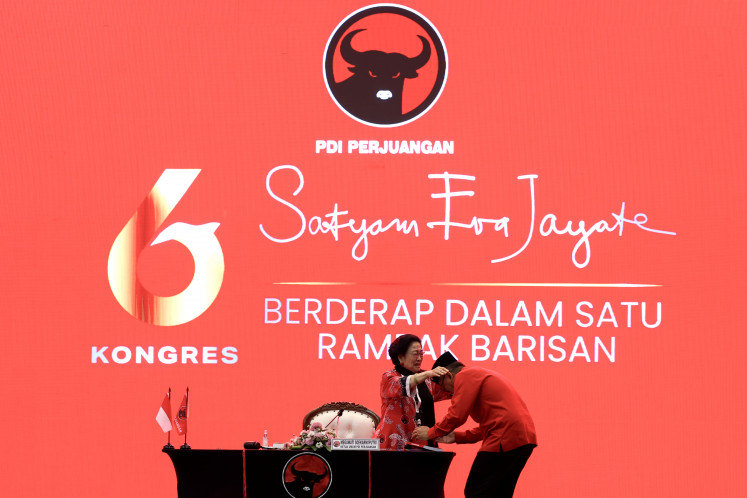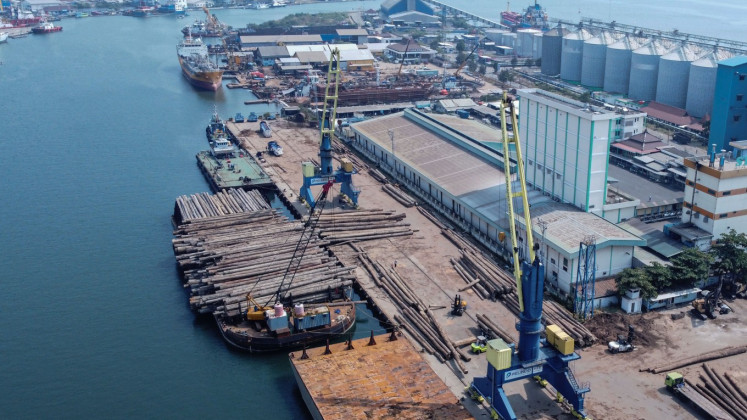Popular Reads
Top Results
Can't find what you're looking for?
View all search resultsPopular Reads
Top Results
Can't find what you're looking for?
View all search resultsAlternative pathways of agricultural development
In general, agricultural management in regions outside of Java is less intensive and productivity is relatively low due to the limitations on access to agricultural infrastructure, inputs, machine tools and technological innovations.
Change text size
Gift Premium Articles
to Anyone
T
he conventional agricultural development model, with an emphasis on the modernization of agricultural inputs and technology, has not had a significant impact on increasing agricultural productivity and has not been able to increase the prosperity of farmers, who are the main actors in national food production. In the macro context, as reported by the Global Food Security Index, in the last three years, the nation’s food security ranking has fallen from 65th to 69th globally.
A uniform approach to agricultural development does not seem appropriate because the characteristics of farmers and models of agricultural resource management in Indonesia vary widely among regions. Outside of Java, on a macro basis, the average tenure of agricultural land is still quite large, both managed by individuals and clans. In general, agricultural management in these areas is less intensive and productivity is relatively low due to the limitations on access to agricultural infrastructure, inputs, machine tools and technological innovations.
On the other hand, on the island of Java, the producer of more than half of the nation’s food, the ownership of agricultural land for food commodities is very small, less than 0.3 hectares per family, so that although access is quite good and could increase productivity, it has not been able to have a real impact on increasing production and farmer income.
As an illustration, rice, as the country’s main food commodity, which is intensively cultivated and is the mainstay of smallholders in Java with good access to various production innovations, allows an increase in productivity up to 6 tons per ha, but in aggregate it has not had a significant impact on improving the livelihoods of farming families because the land managed by farmers is very small.
In line with efforts to maintain the stability of global and national food availability, as well as guarantee the improvement of farmers' prosperity, strategies and breakthroughs are needed to revitalize the conventional policies and practices of agricultural development that have been practiced so far.
The generalist agricultural development model does not seem to suit the diverse conditions and characteristics of agriculture in various regions of Indonesia. Various strategies and approaches are needed to adapt to the characteristics and potential of available agricultural resources. At least three alternative pathways of agricultural development can be developed that have the potential to balance guaranteeing increased production and increasing agricultural prosperity.
The first path, which is prospectively developed, is a combination of small-scale consolidation of the management of staple food agriculture (rice, maize and soybeans) with the development of rural industries based on agricultural resources. Management of narrow agricultural land is generally less efficient, so it is necessary to combine agricultural land management to achieve economies of scale, for example 10 to 20 ha with the support of good management and a number of workers that meets the needs of commercial-scale businesses. With an adequate scale of business, good governance and an efficient farming system, productivity and production can be significantly increased.
With a commercial farming model that emphasizes efficiency, there will be a surplus of labor in rural agriculture. To accommodate the excess workforce, various industries and MSMEs can be developed, as well as small-scale services based on various agricultural resources. Various processed foods, crafts and services that are unique to the location can be developed. Farmers will get a minimum of two sources of income, the first from the agricultural share of owned agricultural land that is managed collectively under one management and from income from MSME businesses and services based on agricultural resources.
The second path is narrow land with land suitability for the development of cash crop horticulture and aquaculture commercial commodities, which can continue to develop individual agriculture-fisheries with the support of various innovations, infrastructure, capital and better marketing networks.
Due to the seasonal nature of production and harvest, various horticultural and fishery commodities can be developed intensively in areas that do not have to be large. The development of high-value fruit and vegetable commodities, including organic products, may increase farmers' income in a weekly, monthly or seasonal pattern. In addition, various ornamental plants with high economic value can also be developed.
The third path is the introduction of various production innovations, good governance and access to product marketing in medium-scale agriculture managed individually, such as the practices in several places outside Java, such as Sumatra, Kalimantan, Sulawesi, Maluku and Papua. In agricultural areas that have adequate land suitability for the development of food commodities, farmers can focus on developing staple food commodities such as rice, corn and soybeans. With the support of innovation and intensive extension services, the potential for increasing production will be even greater. If production can be increased significantly, with a sufficient area of land (1 to 3 ha), the total production will be large and will lead to an increase in farmers’ income while ensuring the stability of food production.
In addition to considering the model or pattern of agricultural production, what is also very urgent is the creation of a conditional agricultural development ecosystem that is able to accelerate the achievement of increased production, productivity and prosperity of farmers. The development of agricultural development ecosystems can be approached with the pentahelix model, which is able to link various subsystems and actors that determine the performance of agricultural development, which includes the government (central and local), farming communities, the private sector, universities, community activists/NGOs and the media.
How each agricultural sector development subsystem interprets, responds and contributes will determine the linkages with other subsystems and, in aggregation, will determine the effectiveness and efficiency of the agricultural development ecosystem. The central government and local administrations must be able to meet the basic needs of agricultural development, for example through the provision of agricultural infrastructure; a smart subsidy input system, machine tools and financing; technological innovation; extension services and the development of farmers and their institutions.
As the main actors of agriculture development, the agricultural community has a very significant role. Creative efforts to increase capacity and respond to various opportunities from related subsystems will determine the success of the production and postproduction processes of agriculture products. Meanwhile, the private subsystem plays an important role as a partner of the farming community in accelerating the adoption of various innovations through the supply and distribution of various inputs and agricultural machinery, as well as the processing and marketing industry of agriculture products.
As institutions that have a mission of education, research and community service, universities should also be actively involved in supporting the success of agricultural development.
Community development activists and NGOs can contribute to specific agricultural development issues, as well as site specifics. Community assistance and empowerment by NGOs in the issue of climate change mitigation strategies, organic product development and fair trade advocacy are examples of NGO involvement that can complement the government's role.
***
The writer is vice dean for research, community service and cooperation at the Gadjah Mada University Faculty of Agriculture in Yogyakarta. The views expressed are personal.










